(image Credit To Dan Hoare On Twitter)
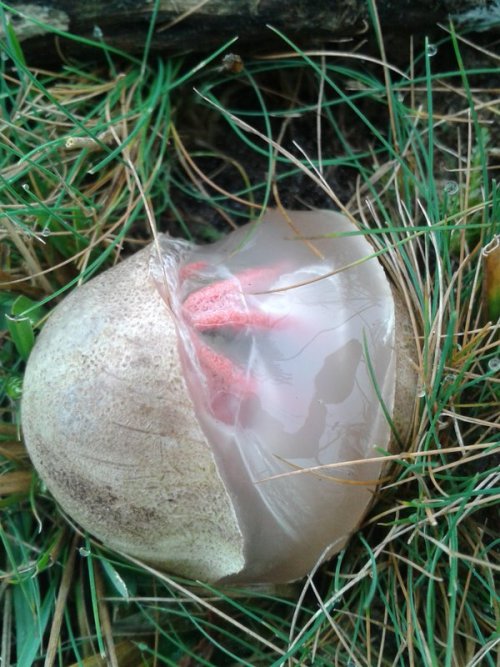
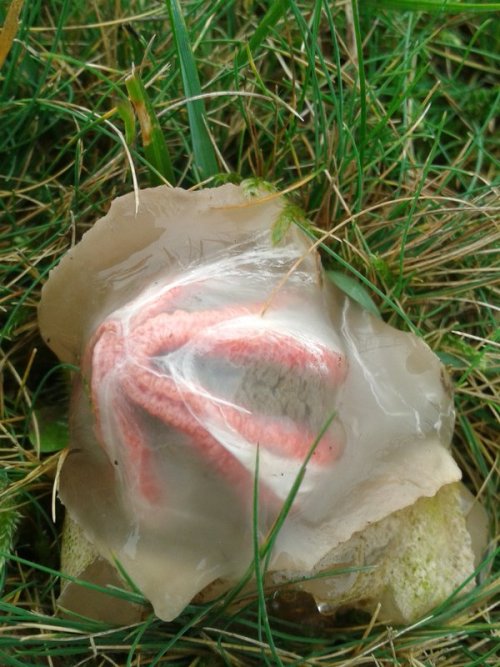
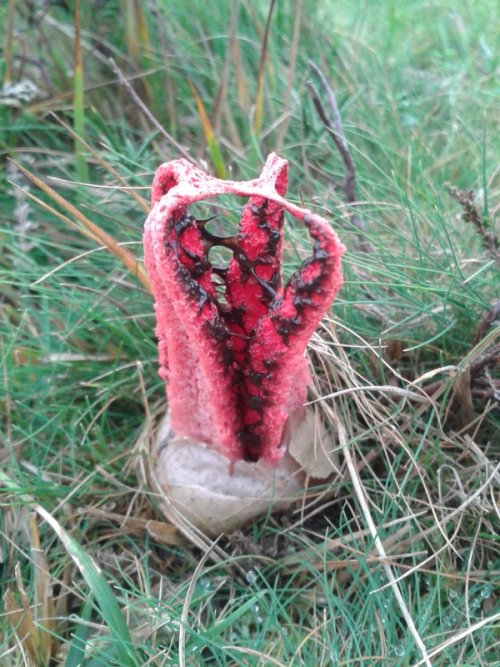
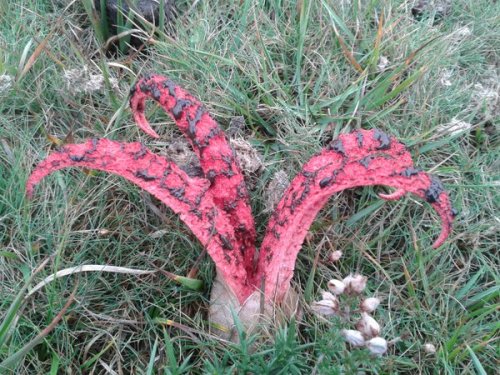
(image credit to Dan Hoare on twitter)
I ONLY JUST LEARNED ABOUT THE EXISTENCE OF THIS MUSHROOM????? WHICH ERUPTS FROM AN EGG BEFORE UNCURLING HELLISH ARMS, EXPOSING ITS STICKY MASS OF SPORES TO BE SPREAD BY FLIES ATTRACTED BY THE SCENT OF ROTTING FLESH???
Admittedly, I am easily won over by all organisms that attract flies with the scent of rotting flesh. But the octopus stinkhorn (Clathrus archeri) also has tentacles, a freaky egg stage, and blackish goop, so it’s my favorite now.
More Posts from Llamaslikesciencetoo and Others
Earth Expeditions Preview
A Closer Look at Our Home Planet

Our view from space shows our planet is changing, but to really understand the details of these changes and what they mean for our future, scientists need a closer look. Over the next six months, we’re taking you on a world tour as we kick off major new field research campaigns to study regions of critical change from land, sea and air.
You can follow the Earth Expeditions on Facebook, Twitter and their Blog.
Take a look at the eight campaigns we will explore:
CORAL (Coral Reef Airborne Laboratory)

This three-year CORAL mission will use advanced airborne instruments and in-water measurements to survey a portion of the world’s coral reefs. The mission will assess the conditions of these threatened ecosystems to better understand their relation to the environment, including physical, chemical and human factors. With a new understanding of reef condition, the future of this global ecosystem can be predicted.
OMG (Oceans Melting Greenland)

Oceans Melting Greenland (OMG) mission will pave the way for improved estimates of sea level rise by addressing the question: To what extent are the oceans melting Greenland’s ice from below? This mission will observe changing water temperatures and glaciers that reach the ocean around all of Greenland from 2015 to 2020. This year, the OMG mission will fly over the periphery of Greenland to take measurements of the heights and extents of Greenland’s coastal glaciers that reach the ocean and release expendable sensors to measure the temperature and salinity of coastal waters. The OMG field campaign will gather data that will help scientists both understand how the oceans are joining with the atmosphere in melting the vast ice sheet and to predict the extent and timing of the resulting sea level rise.
NAAMES (North Atlantic Aerosols and Marine Ecosystems Study)

About half the carbon dioxide emitted into Earth’s atmosphere each year ends up in the ocean, and plankton absorb a lot of it. The NAAMES mission studies the world’s largest plankton bloom and how it gives rise to small organic particles that leave the ocean and end up in the atmosphere, ultimately influencing clouds and climate. This mission will be taking measurements from both ship and aircraft in the North Atlantic.
KORUS-AQ (Korea U.S.-Air Quality)

Air quality is a significant environmental concern around the world. Scientists are developing new ways to untangle the different factors that contribute to poor air quality. KORUS-AQ is a joint field study between NASA and the Republic of Korea to advance the ability to monitor air pollution from space. The campaign will assess air quality across urban, rural and coastal South Korea using observations from aircraft, ground sites, ships and satellites to test air quality models and remote sensing methods. Findings from this study will help develop observing systems using models and data to improve air quality assessments for decision makers.
ABoVE (Arctic Boreal Vulnerability Experiment)

The ABoVE mission covers 2.5 million square miles of tundra, forests, permafrost and lakes in Alaska and Northwestern Canada. Scientists from the mission are using satellites and aircraft to study this formidable terrain as it changes in a warming climate. Teams of researchers will also go out into the field to gather additional data. The mission will investigate questions about the role of climate in wildfires, thawing permafrost, wildlife migration habits, insect outbreaks and more.
ATom (Atmospheric Tomography)

The ATom mission takes flight through Earth’s atmosphere to understand how short-lived greenhouse gases like ozone and methane contribute to climate change. In late July through August 2016, a suite of instruments aboard our DC-8 flying laboratory will be hopping down the Pacific Ocean from Alaska to the southern tip of South America. It will then travel north up the Atlantic to Greenland to measure more than 200 gases and particles in the air and their interactions all around the world.
ORACLES (Observations of Clouds above Aerosols and their Interactions)

Southern Africa produces almost a third of the world’s vegetative burning, which sends smoke particles up into the atmosphere, where they eventually mix with stratocumulus clouds over the southeastern Atlantic Ocean. Little is known about how these particles impact the clouds, which play a key role in both regional and global surface temperatures and precipitation. The ORACLES mission is a five-year ground and air campaign aimed at better understanding their interactions and improve on current climate models.
ACT-America (Atmospheric Carbon and Transport – America)

The ACT-America mission will conduct five airborne campaigns across three regions in the eastern United States to study the transport of atmospheric carbon. This region serves as an ideal study area for its productive biosphere, agricultural activity, gas and oil extraction and consumption, dynamic seasonally varying weather patterns and the most extensive carbon cycle and meteorological observing networks on Earth. Using space borne, airborne and ground-based measurements, this mission will enable more accurate and precise estimates for climate management and prediction by studying sources and sinks of greenhouse gases, which act as a thermal blanket for Earth.
Remember to follow the Earth Expeditions on Facebook, Twitter and their Blog.
Make sure to follow us on Tumblr for your regular dose of space: http://nasa.tumblr.com

TheStare by © wildernessprints.com
Wild adult lynx in Banff National Park
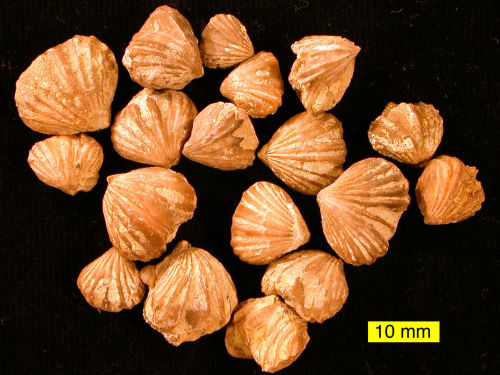
The Ocean Turnover
These are brachiopods, a type of filter-feeding organism that first evolved in the Cambrian era oceans. Although they look a lot like modern-day bivalves (clams), they are a very different organism, found in a totally different phylum. They can readily be distinguished by their shell shapes; brachiopods have sort of a “kink” in their shells whereas bivalves have more rounded shapes. Clams are molluscs, while brachiopods come from the phylum brachiopoda. These two types of filter-feeding organisms have an interesting interplay in the geologic record; if you pick up a limestone from the Paleozoic it is likely to be dominated by brachiopods, while Mesozoic and Cenozoic bivalve shells dominate limestones.
Keep reading

Happy Valentine’s Day my marine bio lovelies! I give you, all the above! Shark Love! Instead of something cheesy to give your admirer, why not make a donation to your favourite conservation group? Show them you care not only about them, but the marine environment too!
A video recording the exciting moment when a diver looking for Megalodon teeth, finds a massive, 6 ¼", fossil tooth off the coast of the Carolinas.
Be sure to follow MegalodonSwag on Tumblr for more great Megalodon related news, information, videos and more…
me, on a date: so what's your opinion on sharks?
them: oh my god they are such cold, heartless MONSTERS and-
me, shoving breadsticks in my purse: sorry but i have to go home, right now, immediately.
How do you think they'll dispose of Tillikums body? :/
They’ll probably do a necropsy after he dies to determine the exact cause of death. After that, I’m not sure what they’ll do. Normally they don’t tell anyone what happens to the animal’s body after they die. Perhaps since Tilikum is so well-known they’ll give him a proper burial/memorial? I’ve heard somewhere before (but for the life of me cannot remember where, so don’t take this as a fact) that Kalina is buried somewhere on the property of SeaWorld Orlando.
I know I’ve read that in Kamogawa Sea World they bury the dead orcas in a cherry blossom garden, which I think is very nice and respectful.

Just some lesser known facts about octopuses you guys might like.
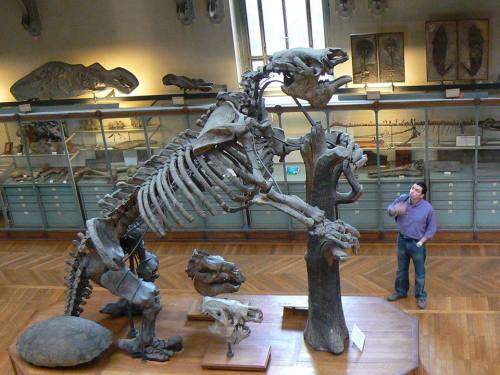
Behemoths of the ancient past…and future?
One thing that many known prehistoric creatures have in common - and the thing that most people find fearsome - is that a lot of them were huge. Everyone knows about the gigantism of T-rex, Diplodocus, and Megalodon. But there were also ground sloths the size of modern-day elephants, dragonflies the size of hawks, and cockroaches the size of domestic cats (!)
Keep reading

The intricacies involved in launching a shuttle off the ground and successfully completing its mission is no doubt a meticulous task. Every move made during a launch is calculated and deliberate, nothing is left for chance.
On that note, having watched a couple of historic shuttle launches, this peculiar behavior caught my eye: the orbiter always faced the earth! ( The orbiter is the plane part of the shuttle)
Why do shuttles orient belly up ?
Protection against space debris
Upon entering the atmosphere, most space debris burn up. But out in space, without the protective blanket of our atmosphere, the space shuttle is exposed to all sizes and shapes of space debris ( also man-made ).

The space shuttle’s belly is designed to take up intense heat and pressure so that the shuttle doesn’t fall apart when it re-enters the atmosphere, and therefore best suited for taking hits from flying space junk
The Sun
Do you remember the heat-resistant space shuttle tiles that I posted about a couple of weeks back?

Putting the spacecraft with it’s bottom to the Sun it is these heat-resistant tiles on the bottom that are most exposed to the full power of the Sun.
This keeps the astronauts safer and cooler than they would be otherwise.
To maneuver
Wait, space shuttles maneuver in flight ? Yup ! For each mission the shuttle must be launched at a certain angle in order to accomplish the prescribed task.

Since the launch pad is fixed i.e you cannot change its angular orientation, the shuttle must perform the maneuver during the ascent in order to orient itself with the trajectory.
This maneuver is known as the Roll maneuver and is performed at a point about one minute or so after the launch.

The Atlantis performing a roll maneuver
Communication
Well, I think this thought might have already crossed your mind.
The belly down position assists in communication with the ground and allows instruments within the cargo bay to be pointed back towards Earth, which is required for many of the experiments carried within the bay.

Home, Sweet Home !
The reason why the shuttle’s cargo bay faces towards the earth has some psychological benefit as well.
The crew of the crew are given the spectacular views of our home planet glorifying the magnificence of its existence, rather than staring at the cold, dark void of space that lies afar.

-
 kawaiiskeletondragonbanana liked this · 1 month ago
kawaiiskeletondragonbanana liked this · 1 month ago -
 meredoubt liked this · 1 month ago
meredoubt liked this · 1 month ago -
 schnee-gheist liked this · 2 months ago
schnee-gheist liked this · 2 months ago -
 roadkill2580 liked this · 2 months ago
roadkill2580 liked this · 2 months ago -
 accidental-gravitas reblogged this · 2 months ago
accidental-gravitas reblogged this · 2 months ago -
 tykick liked this · 2 months ago
tykick liked this · 2 months ago -
 ieatrice liked this · 2 months ago
ieatrice liked this · 2 months ago -
 18nth reblogged this · 2 months ago
18nth reblogged this · 2 months ago -
 squidsmenagerie reblogged this · 2 months ago
squidsmenagerie reblogged this · 2 months ago -
 oldbays reblogged this · 2 months ago
oldbays reblogged this · 2 months ago -
 whyhellotheregandalf liked this · 3 months ago
whyhellotheregandalf liked this · 3 months ago -
 necrophiliacrelationship liked this · 4 months ago
necrophiliacrelationship liked this · 4 months ago -
 burger-awesome liked this · 7 months ago
burger-awesome liked this · 7 months ago -
 charomiami liked this · 7 months ago
charomiami liked this · 7 months ago -
 squiditty reblogged this · 7 months ago
squiditty reblogged this · 7 months ago -
 when-hijinks-ensues liked this · 8 months ago
when-hijinks-ensues liked this · 8 months ago -
 glacier--freeze liked this · 8 months ago
glacier--freeze liked this · 8 months ago -
 uglyseason liked this · 8 months ago
uglyseason liked this · 8 months ago -
 sawkerduce reblogged this · 8 months ago
sawkerduce reblogged this · 8 months ago -
 sawkerduce liked this · 8 months ago
sawkerduce liked this · 8 months ago -
 mellowrefrain reblogged this · 8 months ago
mellowrefrain reblogged this · 8 months ago -
 scorpiotribe reblogged this · 9 months ago
scorpiotribe reblogged this · 9 months ago -
 brambleberrybush liked this · 9 months ago
brambleberrybush liked this · 9 months ago -
 warcotuj8746 reblogged this · 9 months ago
warcotuj8746 reblogged this · 9 months ago -
 glowinthedarkforests liked this · 9 months ago
glowinthedarkforests liked this · 9 months ago -
 4mph reblogged this · 10 months ago
4mph reblogged this · 10 months ago -
 vintagedykenot2old reblogged this · 10 months ago
vintagedykenot2old reblogged this · 10 months ago -
 the-flailing-octopus reblogged this · 10 months ago
the-flailing-octopus reblogged this · 10 months ago -
 mlleclaudine reblogged this · 10 months ago
mlleclaudine reblogged this · 10 months ago -
 t-dx liked this · 10 months ago
t-dx liked this · 10 months ago -
 69reigenlover69 liked this · 10 months ago
69reigenlover69 liked this · 10 months ago -
 lutefisk-kingdom liked this · 10 months ago
lutefisk-kingdom liked this · 10 months ago -
 missbehavior0u0 liked this · 10 months ago
missbehavior0u0 liked this · 10 months ago -
 bugandbreakfast reblogged this · 10 months ago
bugandbreakfast reblogged this · 10 months ago -
 bugandbreakfast liked this · 10 months ago
bugandbreakfast liked this · 10 months ago -
 alchemizing reblogged this · 10 months ago
alchemizing reblogged this · 10 months ago -
 hivepixels reblogged this · 10 months ago
hivepixels reblogged this · 10 months ago -
 hivepixels liked this · 10 months ago
hivepixels liked this · 10 months ago -
 greenteaknivesandcrocodiles liked this · 10 months ago
greenteaknivesandcrocodiles liked this · 10 months ago -
 pixelpriestess reblogged this · 10 months ago
pixelpriestess reblogged this · 10 months ago -
 pixelpriestess liked this · 10 months ago
pixelpriestess liked this · 10 months ago -
 raccoons-and-rangoons liked this · 10 months ago
raccoons-and-rangoons liked this · 10 months ago -
 raggel-muffin liked this · 10 months ago
raggel-muffin liked this · 10 months ago -
 caramba-caramba liked this · 10 months ago
caramba-caramba liked this · 10 months ago -
 threeninesfine reblogged this · 10 months ago
threeninesfine reblogged this · 10 months ago -
 threeninesfine liked this · 10 months ago
threeninesfine liked this · 10 months ago -
 shipleaves reblogged this · 10 months ago
shipleaves reblogged this · 10 months ago
Mainly interested in ecology, but also the entirety of science.
179 posts